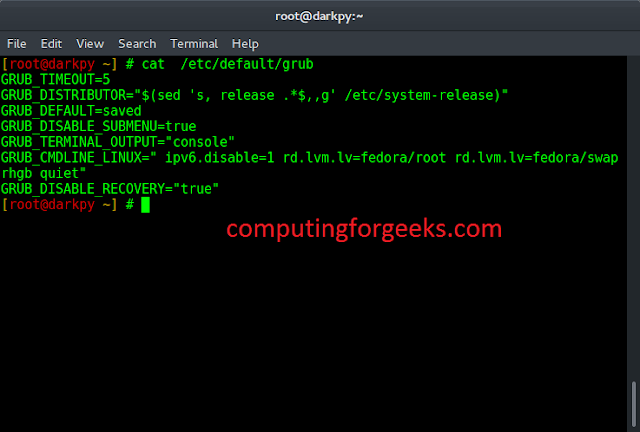Given a Dictionary, divide dictionary into K sized different dictionaries list.
Input : test_dict = {‘Gfg’ : 1, ‘is’ : 2, ‘best’ : 3, ‘for’ : 4, ‘neveropen’ : 5, ‘CS’ : 6}, K = 3
Output : [{‘Gfg’: 1, ‘is’: 2, ‘best’: 3}, {‘for’: 4, ‘neveropen’: 5, ‘CS’: 6}]
Explanation : Divided into size of 3 keys.Input : test_dict = {‘Gfg’ : 1, ‘is’ : 2, ‘best’ : 3, ‘for’ : 4}, K = 2
Output : [{‘Gfg’: 1, ‘is’: 2}, {‘best’: 3, ‘for’: 4}]
Explanation : Divided into size of 2 keys.
Method 1: Using loop
In this, we iterate for all the keys in dictionary using loop and bifurcate according to size and append to new list.
Python3
# Python3 code to demonstrate working of # Convert dictionary to K Keys dictionaries# Using loop# initializing dictionarytest_dict = {'Gfg' : 1, 'is' : 2, 'best' : 3, 'for' : 4, 'neveropen' : 5, 'CS' : 6}# printing original dictionaryprint("The original dictionary is : " + str(test_dict))# initializing K K = 2res = []count = 0flag = 0indict = dict()for key in test_dict: indict[key] = test_dict[key] count += 1 # checking for K size and avoiding empty dict using flag if count % K == 0 and flag: res.append(indict) # reinitializing dictionary indict = dict() count = 0 flag = 1 # printing result print("The converted list : " + str(res)) |
The original dictionary is : {'Gfg': 1, 'is': 2, 'best': 3, 'for': 4, 'neveropen': 5, 'CS': 6}
The converted list : [{'Gfg': 1, 'is': 2}, {'best': 3, 'for': 4}, {'neveropen': 5, 'CS': 6}]
Time Complexity: O(n*n), where n is the length of the list test_dict
Auxiliary Space: O(n) additional space of size n is created where n is the number of elements in the res list
Method 2: Using dictionary comprehension
Step-by-step approach:
- Initialize a dictionary called test_dict with key-value pairs.
- Print the original dictionary using the print() function.
- Set the value of K to the desired number of keys per dictionary.
- Use dictionary comprehension to create a list of dictionaries. Inside the comprehension, iterate over the items of test_dict and use the modulo operator to group them into sub-dictionaries of size K. The dict() constructor is used to create each sub-dictionary.
- Print the resulting list of dictionaries using the print() function.
Below is the implementation of the above approach:
Python3
# Python3 code to demonstrate working of # Convert dictionary to K Keys dictionaries# Using dictionary comprehension# initializing dictionarytest_dict = {'Gfg' : 1, 'is' : 2, 'best' : 3, 'for' : 4, 'neveropen' : 5, 'CS' : 6}# printing original dictionaryprint("The original dictionary is : " + str(test_dict))# initializing K K = 2# using dictionary comprehension to create list of sub-dictionariesres = [dict(list(test_dict.items())[i:i+K]) for i in range(0, len(test_dict), K)]# printing result print("The converted list : " + str(res)) |
The original dictionary is : {'Gfg': 1, 'is': 2, 'best': 3, 'for': 4, 'neveropen': 5, 'CS': 6}
The converted list : [{'Gfg': 1, 'is': 2}, {'best': 3, 'for': 4}, {'neveropen': 5, 'CS': 6}]
Time complexity: O(N), where N is the number of key-value pairs in the original dictionary.
Auxiliary space: O(N/K), where N is the number of key-value pairs in the original dictionary and K is the size of each sub-dictionary.
Method 3: Using the iter function and the dict constructor.
Step-by-step approach:
- Initialize an empty list to store the sub-dictionaries.
- Get an iterator of the original dictionary using the iter function.
- In each iteration, use the dict constructor to create a sub-dictionary from the next K items in the iterator, where K is the desired number of keys in each sub-dictionary.
- Append the sub-dictionary to the list of sub-dictionaries.
- Return the list of sub-dictionaries.
Below is the implementation of the above approach:
Python3
# Python3 code to demonstrate working of# Convert dictionary to K Keys dictionaries# Using iter function and dict constructorimport itertools# initializing dictionarytest_dict = {'Gfg': 1, 'is': 2, 'best': 3, 'for': 4, 'neveropen': 5, 'CS': 6}# printing original dictionaryprint("The original dictionary is : " + str(test_dict))# initializing KK = 2# using iter function and dict constructor to create list of sub-dictionariesit = iter(test_dict.items())res = []while True: sub_dict = dict(itertools.islice(it, K)) if not sub_dict: break res.append(sub_dict)# printing resultprint("The converted list : " + str(res)) |
The original dictionary is : {'Gfg': 1, 'is': 2, 'best': 3, 'for': 4, 'neveropen': 5, 'CS': 6}
The converted list : [{'Gfg': 1, 'is': 2}, {'best': 3, 'for': 4}, {'neveropen': 5, 'CS': 6}]
Time complexity: O(n), where n is the number of items in the original dictionary.
Auxiliary space: O(n), since we need to store the list of sub-dictionaries.




